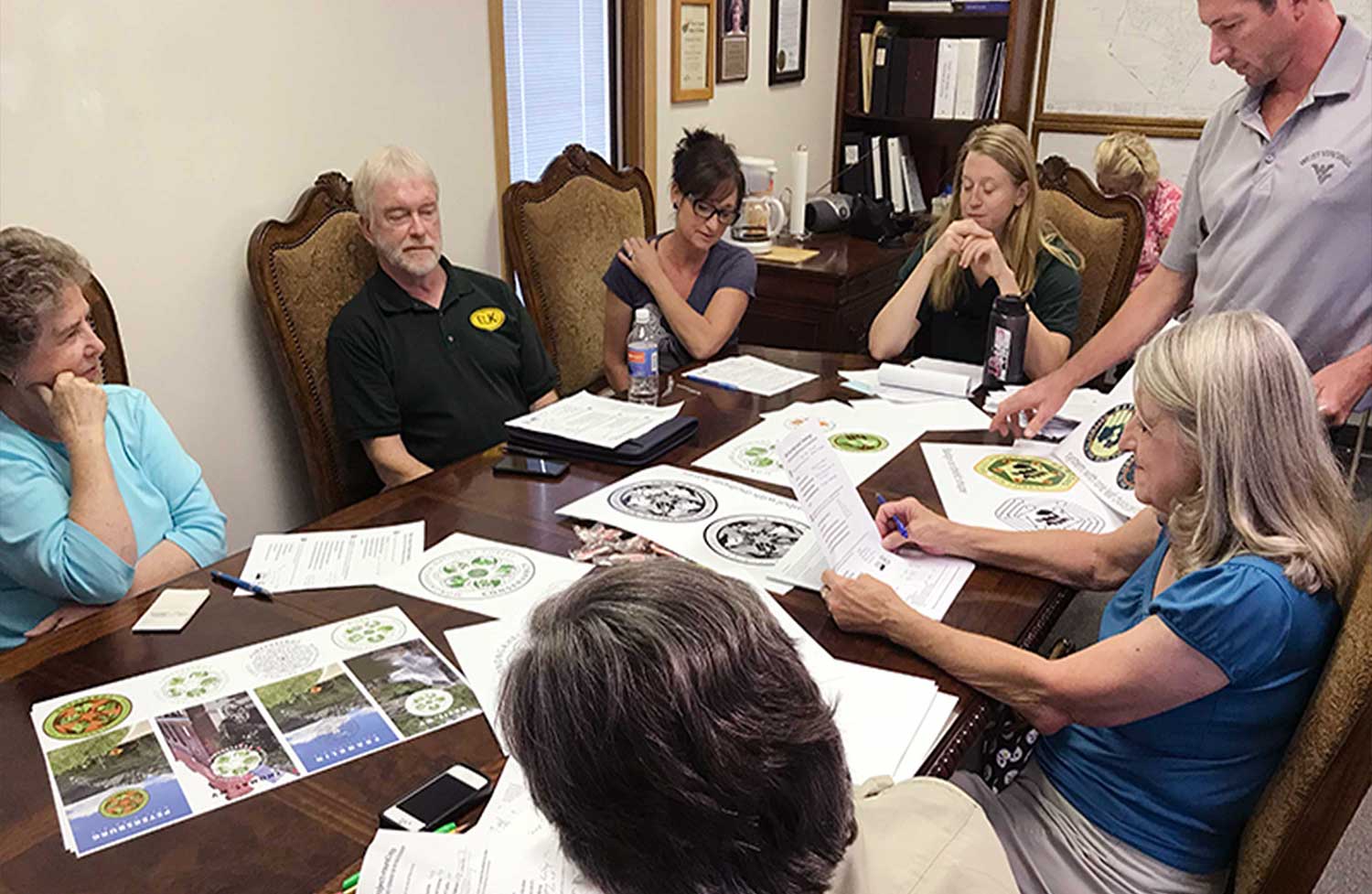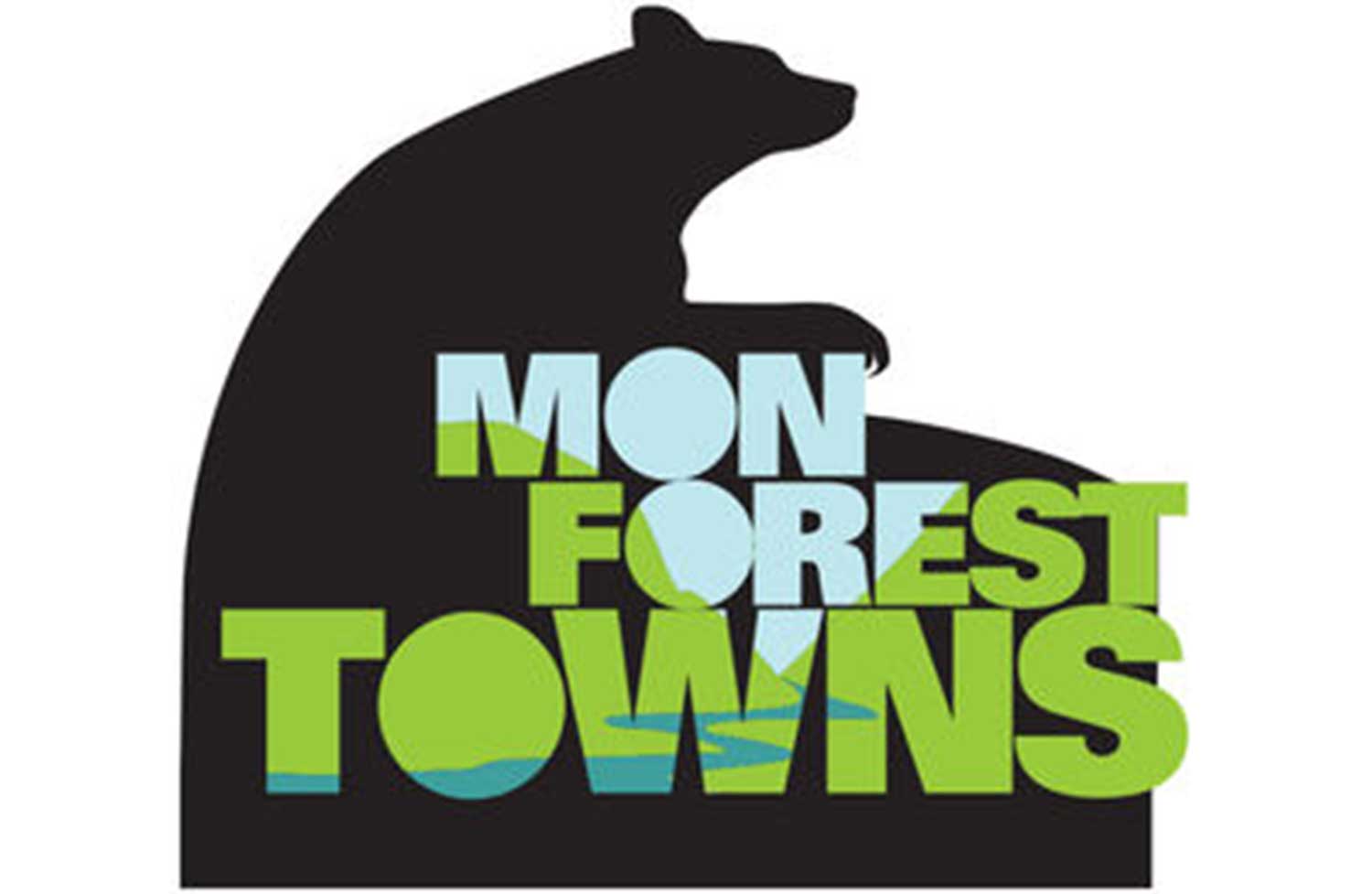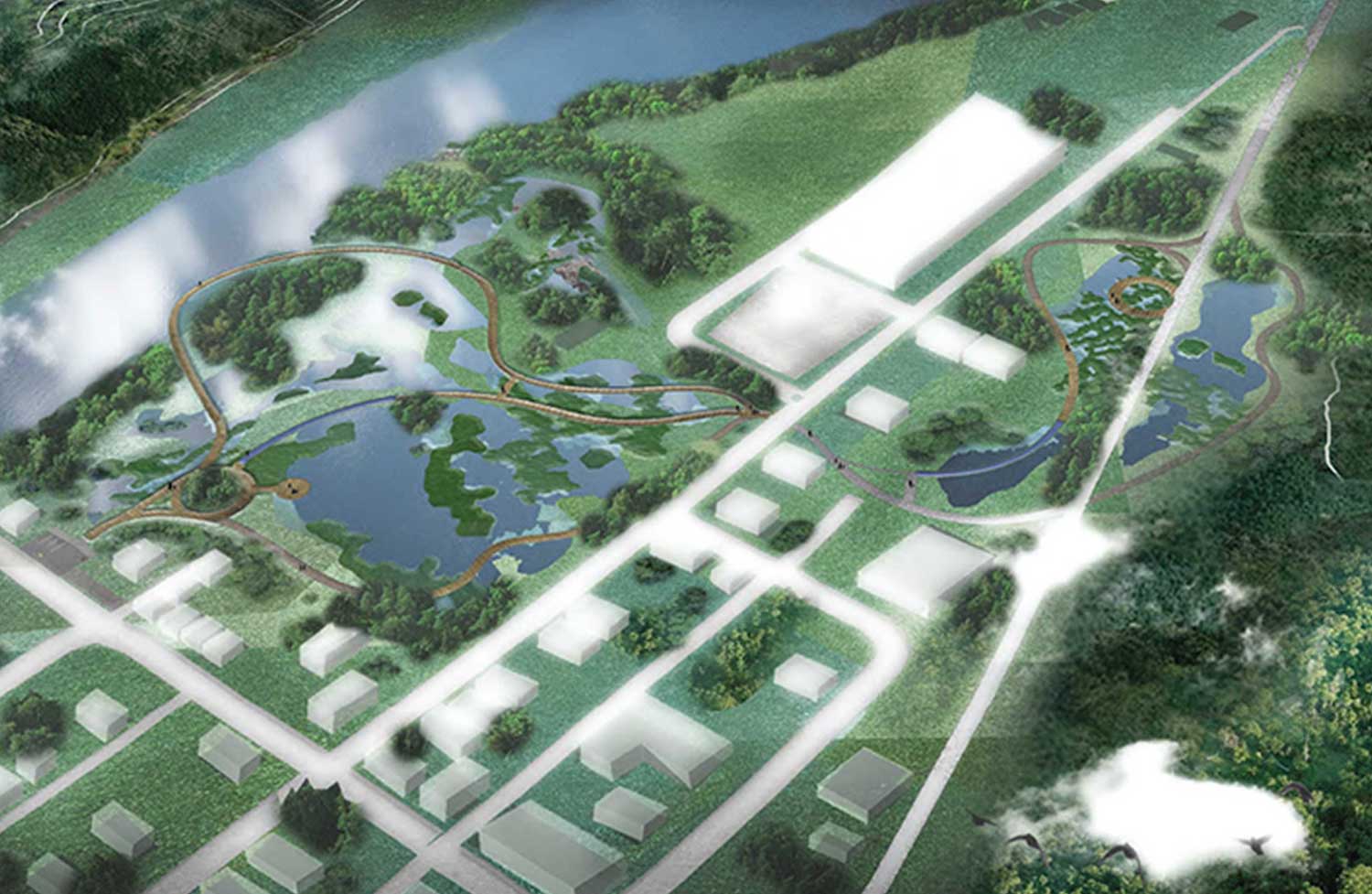Rural Development Process
For recreation economies

- Establishing a Shared Vision for Change Our vision is to help community stakeholders invest in a shared recreation resource to generate positive outcomes for the health and vitality of this region.

- Mapping the Landscape Analysis of baseline data to identify key issues and gaps, through completition of a community assesment report and recreation economies asset map.

- Participatory Research Identifying indicators applicable to recreation economies, measuring performance indicators, and sharing an approach to sucess.

- Regional Branding & Identity A regional identity system and style guide were developed that allow residents an opportunity to be part of the forest story.
Establishing a Shared Vision for Change
The complex nature of most social problems belies the idea that any single program or organization, however well managed and funded, can singlehandedly create lasting large-scale change. Collective impact is generated by collaborative efforts that have achieved substantial impact on large scale social problems. This project has utilized principles found in Channeling Change: Making Collective Impact Work, as published by the Stanford Center on Philanthropy and Civil Society.
The Monongahela National Forest (MNF) in partnership with West Virginia University, and USDA Rural Development began bringing diverse stakeholders together in 2017 to create a shared recreation vision for each county and the greater region surrounding the MNF. Creating this dialogue with business owners and community leaders is important in understanding how we can move forward together to make full use of forest and community assets to attract and create a vibrant community experience for local residents and visitors. Producing a local climate where communities can rally around the recreational and cultural assets of the MNF will facilitate rural prosperity and economic development.
| Monongahela National Forest Recreation Economies Charter Partners: | |
| West Virginia University Extension Service | |
| Monongahela National Forest | |
| USDA Rural Development | |
| Woodlands Development Group | |
Mon Forest Towns’ vision is to build and maintain a strong economy that thrives off sustainable recreation, tourism, healthy landscapes, and active land management while preserving each town’s character. Our mission is to collaboratively grow a strong, sustainable recreation economy that enhances the quality of life for residents and visitors by providing the best outdoor experience.
| Seven Goals for Developing Recreation Economies: |
| Goal #1: Improve community health and wellness through promotion of outdoor recreation activities and infrastructure improvement. |
| Goal #2: Develop an outdoor recreation entrepreneurial culture by supporting the creation and growth of local recreation and tourism-based businesses. |
| Goal #3: Promote the uniqueness of the Mon Forest Towns and recreation opportunities in the region through collaborative regional marketing. |
| Goal #4: Develop world-class trails and outdoor recreation opportunities
in the Mon Forest Towns region
|
| Goal #5: Increase employment opportunities in recreation related fields to
build a year-round recreation economy
|
| Goal #6: Create a downtown experience that recreationists would enjoy
|
| Goal #7: Develop a Sustainable Partnership Framework
|
Creating the Backbone Organization
Marketing Committee
The Marketing Committee is comprised of the Convention and Visitors Bureaus (CVB’s) located within the counties of the Mon Forest Towns Partnership region. Membership is the executive director of the CVB or their authorized designee and members or alternate representatives of the board of directors. The committee chair is appointed from within the committee membership by a majority vote of the MFTP board. This committee is responsible for the marketing, branding, and other promotional activities, including maintaining and strengthening the MFTP’s relationship with the West Virginia Department of Tourism and merchandising and approval of requests for branding or logo use in accordance with these bylaws and other applicable policies of the MFTP.
The Marketing Committee chair is Chelsea Faulknier, Marketing Director of the Pocahontas County Convention and Visitors Bureau.
Mapping the Landscape and Analyzing Baseline Data to Identify Key Issues and Gaps
Community Assessments
The WVU Rural Tourism Specialist developed a recreation economies gateway community assessment form. The FS Resource Assistants met with local stakeholders to conduct gateway community assessments in order to identify each community’s strengths and weaknesses related to recreation economies. Assessment categories included: trail to town connection, safety, parking, bike parking, signage, business/services, marketing/promotion, general impressions, streetscape, storefronts, amenities, character, trailheads and trail access among other items. A report highlighting common strengths, weaknesses, and opportunities was published and presented to the communities. Download the Gateway Community Assessment Report
Asset Mapping
The goal of this asset mapping work is to provide a comprehensive inventory and mapped representation of available tourism and recreation resources. A related analysis of recreation infrastructure needs and gaps is included. In addition to gaps in existing amenities, gaps in available data sources may also be identified through this process. The results of the asset mapping can then be used in promotional materials and online mapping to further community and economic development for the region.
Specifically, tourism and recreation related assets include local and state managed recreational facilities (parks, trails, recreational sites, other specially designated areas), cultural venues, and historic sites; as well as business locations of interest to visitors including restaurants, accommodations, specialty retail establishments, grocery stores, convenience stores, agri-tourism sites, and more.
Mapping of these resources involves developing an up-to-date, comprehensive inventory of the assets themselves, including recording an accurate spatial location for each feature. Community involvement in the asset mapping process can include data collection on additional assets, classification of status of each asset (i.e. “visitor ready”), as well as identification of potential data gaps. Results of asset mapping can be presented to interested parties and/or the public using interactive online mapping tools such as ArcGIS Online and other similar web mapping platforms.
This work is being completed by the Natural Resource Analysis Center (NRAC) within the Davis College at West Virginia University. The NRAC is a multi-disciplinary research facility that conducts geospatially-based research, teaching and service focused on environmental and natural resource issues for West Virginia and the surrounding region. NRAC has supported many past projects in recreation and tourism data development and GIS mapping support for West Virginia, including the successful designation of the Snowshoe Highlands IMBA Ride Center by the International Mountain Biking Association.
Community Design
The Community Engagement Lab (CEL) in the School of Design and Community Development provides technical assistance in the community design and planning process. All projects undertaken by the CEL are participatory and capacity-building, bringing the expertise of faculty and the energy of students to solve critical problems of design in communities. Faculty and students propose to take a regional approach to design & planning, finding common themes and connections to amplify in considering alternative futures for community development. CEL faculty possess experience and expertise in community design, planning & visioning facilitating the process in partnership with local stakeholders in order to build local capacity and focused strategic planning.
Participatory Research
Resident and Visitor Perceptions
Economic Impact Analysis
In order to determine if environmental, economic, and social conditions are being positively impacted by recreation economies initiatives, metrics including employment, unemployment, income, household earnings, educational attainment, and population change (both broadly and for specific demographics, i.e., 25-34 year olds) must be tracked annually for individual counties and the larger region. Changes in visitation and visitor spending; changes or anticipated changes to employment, business spending, worker and proprietor incomes, etc.; and industry trends and local issues should be considered by local stakeholders to encourage growth and maintain the competitiveness of local recreation and tourism businesses in the broader economy.
Mon Forest Towns Economic and Quality of Life Indicators ReportRegional Branding and Marketing
Creating a Regional Identity
A branding of the symbiotic relationship of these communities with the Forest could help continue the benefits of working together that could grow the economies of the towns and promote environmentally responsible travel as well as sustainable planning. Working with communities and Forest Service, a brand was co-designed that residents could see as opportunities to be part of the forest story.
Such a system will allow for cooperation among communities with a vision of offering a week of experiences for visitors that allow for towns who identify with nearby attractions such as the Cass Railroad or Seneca Rocks to be recognized as unique within a trail of linked opportunities.
Meetings were facilitated by WVU Graphic Design and Rural Tourism Specialist in each MNF gateway community in 2018 to gather local stakeholder input into the process and co-design a regional identity. Local stakeholders were guided through the social design process and asked to help design an identity that will unite the gateway communities and also promote the unique aspects of each town. An identity system and style guide were finalized in early 2019.
Funding was secured to design and install a welcome/gateway sign for each of the current participating Mon Forest Towns. In addition to the gateway signs, funding from the US Forest Service and the Claude Worthington Benedum Foundation provides mini-grants for each town to support priority signage projects including wayfinding, kiosks, interpretive signs, a billboard, and rack cards. A WVU Graphic Design student, Skylar Spence, is working with Eve Faulkes, chair of the Graphic Design program, and the communities to design signage. In addition, a grant from the Central Appalachian Network supports merchandise including bumper stickers and window clings.
A marketing committee was established in 2020 which includes participation from each of the Convention and Visitors Bureaus in the region along with other strategic partners. The marketing committee is working with the WVU Graphic Design program to develop a website that will go live in fall 2020 and include an interactive asset map, stories, and detailed information for each town. Stay tuned as additional regional branding and marketing initiatives unfold.


